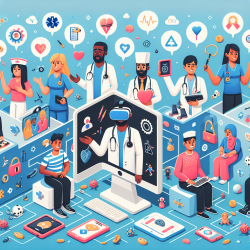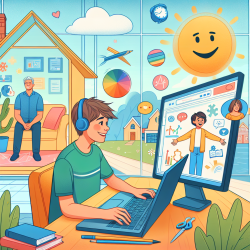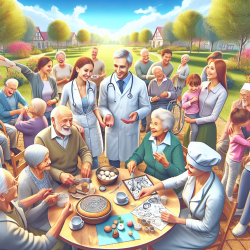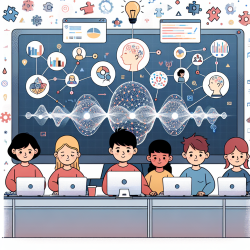Introduction
The rapid advancement of technology has opened new avenues for enhancing educational outcomes in various fields, including health sciences. One such innovative approach is the use of virtual worlds (VWs) for developing interprofessional (IP) health competencies. The research article "Developing Interprofessional Health Competencies in a Virtual World" by King et al. (2012) provides a comprehensive exploration of how VWs can be utilized effectively in health education. This blog aims to highlight key findings from the study and offer practical recommendations for practitioners looking to improve their skills and outcomes through virtual simulations.
Understanding the Four-Dimensional Framework
The study by King et al. utilizes de Freitas and Oliver's four-dimensional framework to guide the development of virtual world simulations. This framework is instrumental in ensuring that educational simulations are both technically satisfactory and educationally appropriate. The four dimensions include:
- Context: The environment where learning occurs, whether formal or informal, and its relationship with real-world practice.
- Learner Specification: Identifying the learner's background, learning style, and how they collaborate in teams.
- Internal Representation: The level of fidelity and immersion required to achieve learning outcomes.
- Pedagogic Considerations: The learning models used, such as associative or cognitive, and their influence on learning outcomes.
Benefits of Virtual Worlds in Health Education
Virtual worlds offer several advantages for health education, particularly in IP settings:
- They allow geographically dispersed learners to engage in real-time interactive training.
- They provide access to environments that are otherwise difficult to simulate in the real world.
- They enable repeated use for training in high-risk, low-frequency situations.
These benefits make VWs a promising tool for enhancing clinical and teamwork skills among health science students and practitioners.
Recommendations for Practitioners
Based on the research findings, here are some recommendations for practitioners interested in leveraging virtual worlds for IP education:
- Invest Time in Design: Use the four-dimensional framework as a starting point to address design details, especially educational aspects like learner characteristics and pedagogic approaches.
- Utilize Storyboards: Storyboards can help map out scenarios and ensure clear communication among the design team.
- Address Fidelity and Immersion: Use the framework's mode of representation questions to bridge gaps in expertise between technical and educational teams.
- Ensure Effective Collaboration: Establish a common understanding of system requirements and educational goals among all team members.
- Test and Train: Test the computing environment and provide training to all users before conducting simulations.
Conclusion
The integration of virtual worlds into health science education holds significant potential for enhancing interprofessional competencies. By following a structured framework and addressing key considerations in design and implementation, practitioners can create immersive and effective learning experiences. For those interested in further exploring this topic, the original research paper provides a detailed account of the study and its findings.
To read the original research paper, please follow this link: Developing interprofessional health competencies in a virtual world.










